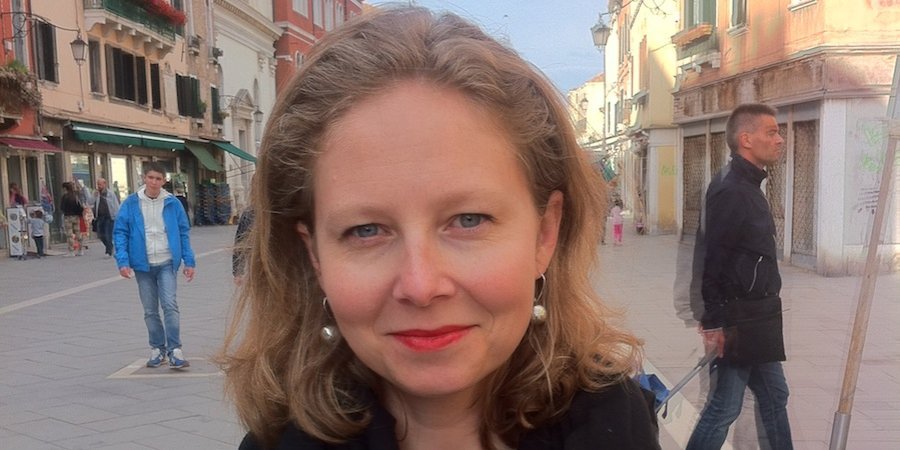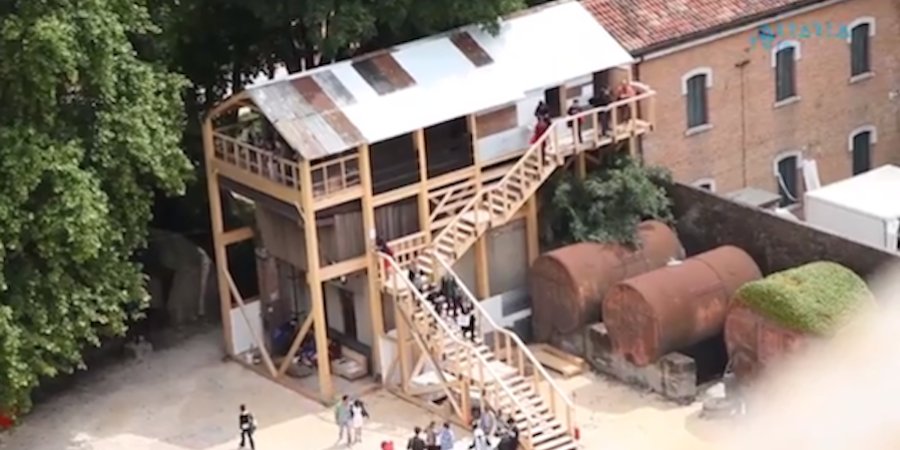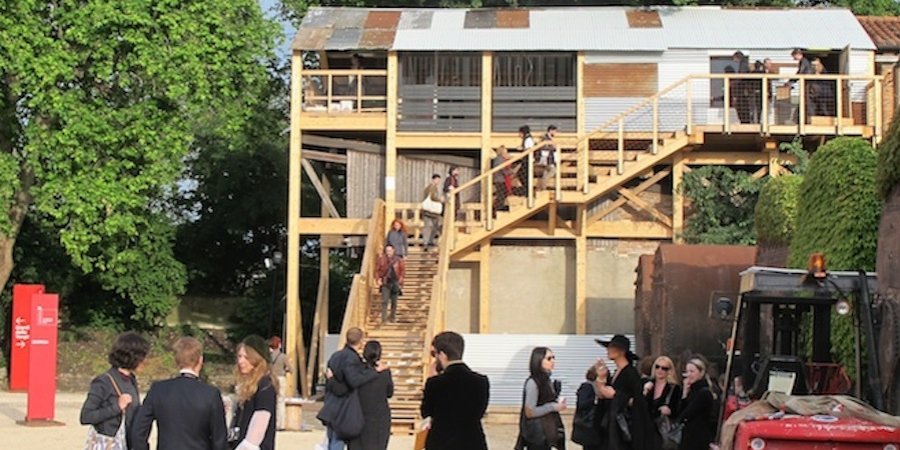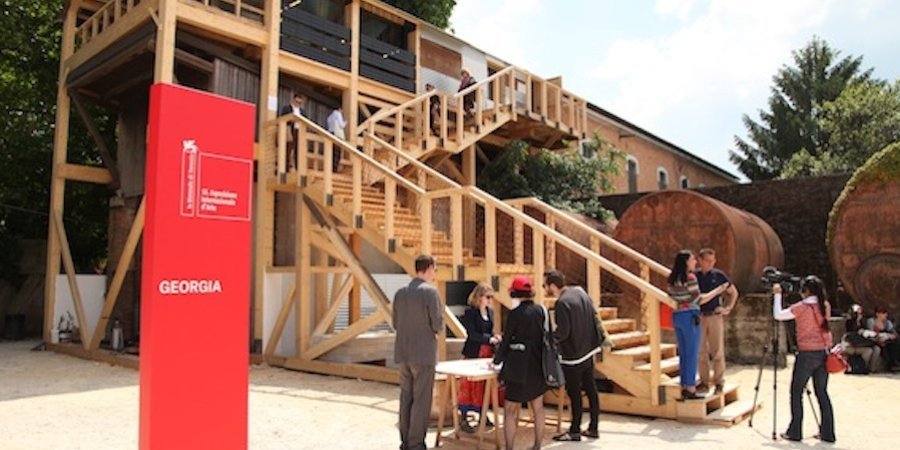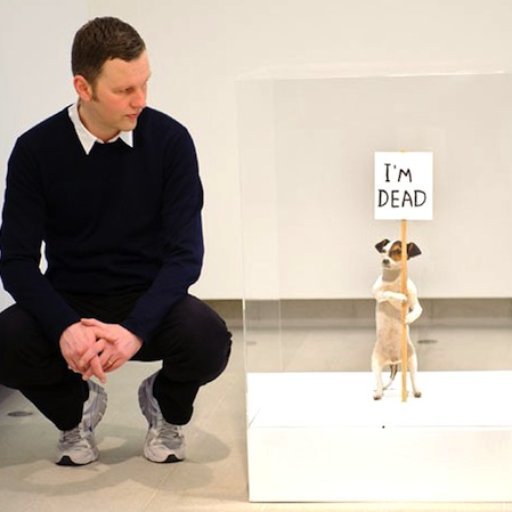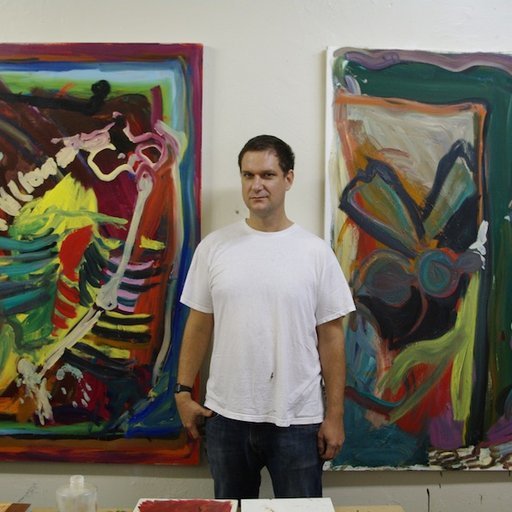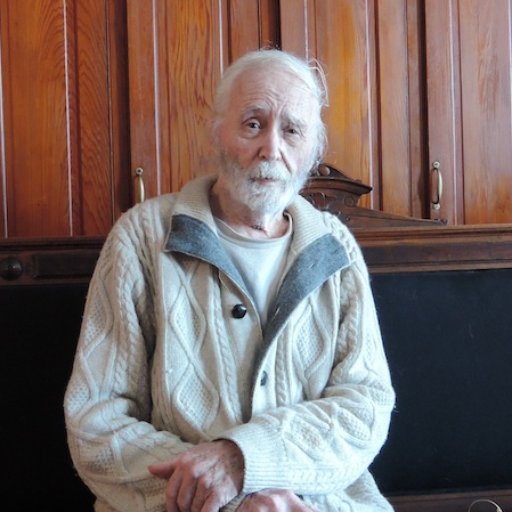At this year's Venice Biennale, which is drawing to a close this weekend, one of the most revelatory national pavilions could not be found in the gardens of the celebrated Giardini or the former ship-building plant known as the Arsenale, both domains long ago filled to capacity by the world's political and economic superpowers. Instead, the Georgian Pavilion was on top of the Arsenale, occupying a patch of the roof toward the back of the cavernous structure. A jury-rigged pile of wood and steel containing a group of largely performative works by the country's artists, the pavilion was itself the main attraction, a piece of architecture that made a clear statement: Georgia (and its art scene) was determined to enter the closed-off precincts of the international community, and it would do so through a combination of improvisation, innovation, and old-fashioned moxie.
The curator of this unorthodox display, Joanna Warsza, knows a thing or two about using architecture to make a political point. The author of Ministry of Highways: A Guide to the Performative Architecture of Tbilisi, among other books, and the co-curator (with artist Artur Żmijewski) of the intensely provocative 7th Berlin Biennial in 2012—titled "Forget Fear"—Warsza is a specialist in the ways post-Soviet nations use vernacular building styles and other means to carve out a space for cultural independence and political agency. Her Pavilion, in fact, was inspired by the so-called kamikaze loggia of Tbilisi, rickety structures that citizens used to build out the uniform block apartments imposed upon them under the Soviet Union and transform these prison-like buildings into traditional local hillside houses, complete with balconies, vertiginous outcroppings, and other DIY refinements.
Now the Biennale is coming to a close—but the Georgian Pavilion is going to stay where it is, at least through the Venice architecture biennale that the venerated architect Rem Koolhaas is curating next summer. And a competition for a new project adding another layer atop the "Kamikaze Loggia," as the pavilion is titled, will soon be announced. To get to the bottom of the complex themes that accompany Warsza's creation, we spoke to the curator—who is currently at Olafur Eliasson’s Institut für Raumexperimente in Berlin—about what she looks for in engaged art, the different ways artists can affect political situations, and the improbably story behind her pavilion.
Back in 2009 I was commissioned to work on a project in the medieval district of Tbilisi called Betlemi. It was my first trip to Georgia and almost one of my first to the former USSR. Born and raised in Poland, I was brought up to believe that that we are the deep end of Eastern Europe. Therefore working in South Caucasus made me realize that I had so far functioned in the paradigm of West-o-centric shortsightedness, looking mostly towards Paris, London, or New York. Since then Tbilisi and Georgia—sometimes called by the locals as “Italy gone Marxist,”due perhaps to the Black Sea climate, the viticulture, the dramatic landscape, but also to the community-oriented mindset—became my orientation point. And I kept coming back: in 2010 to initiate a context-responsive project Frozen Moments: An Architecture Speaks Back in the former Ministry of Highways, one of the most stunning buildings of the world.
I got especially interested in how the Soviet past is appropriated and domesticated via the architectural forms, how the self-organization can be a form of political and social resistance, how the parasite and informal architecture generates the emancipatory and progressive potential and which kind of agency stems from the local urban, artistic, and theoretical concepts. It was these years of investigating the city’s architecture and its context-responsive art scene that led to my curating the Georgian Pavilion at this year’s Venice Biennale—a Tbilisi-based professor Nana Kipiani told me that Ministry of Culture’s website was soliciting proposals for the pavilion and encouraged me to apply, so I did.
What was the inspiration behind occupying a site on the roof of the Arsenale?
Occupying seems like a very contemporary term to describe what we did. In reality we are renting 60 square meters of a roof from the Venice Biennale on which we built a pavilion-artwork called Kamikaze Loggia, an extension of the existing medieval architecture. It simply occurred to Gio Sumbadze, an artist who gave the shape to the loggia, and myself that the fact that Georgia doesn’t have a permanent pavilion can be an advantage and that we could imagine one and just build it. Of course it wasn’t easy, since, as you know, Venice is a last place on the planet where anyone is allowed to build something, so there was a lot of negotiation all the way through.
Gio Sumbadze is one of the first persons I met in Tbilisi. He is an artist, researcher, and curator who runs Urban Research Lab, which is an ongoing archive looking at the secondary -uses of the Soviet infrastructure and its degradation. It is from Gio that I first heard about the vernacular extensions of the high modernist blocks named kamikaze loggias. They have been created in Georgia since the 1990s as an organic response to the lawless times after the fall of the Soviet Union. They increase the living space and are usually used as terraces, extra rooms, open refrigerators, or—as in Sumbadze’s case—an artist studio, and finally even as a national pavilion. It is said that a Russian journalist dubbed them “kamikaze,” drawing a parallel between their romantic and suicidal character and the typical ending of most Georgian family names, as in “-adze.”
Such architecture also refers back to the local palimpsestic building technique, which since the Middle Ages has allowed new houses to be built on top of existing ones on the steep slopes of the Caucasus Mountains—thus not monumentalising the past, but expanding on it for the future. What struck me the most was that the Soviet heritage didn’t have to be dismantled or ignored—like in my native Poland—but was simply overgrown, domesticated and appropriated. So the Georgian Pavilion during the Venice Biennale took a form of such an artistic and curatorial translation and transposition of a kamikaze loggia to its Italian roots—because, after all, loggias come from Italy.
The pavilion, based on an artist’s model and hosting a community of artists, was attached to a building in Arsenale. The structure designed by Gio Sumbadze was completed by the artists Thea Djordjadze and Gela Patashuri, while the exhibition inside hosted more works from Djordjadze, Patashuri, Ei Arakawa, and Sergei Tcherepnin, as well as Nikoloz Lutidze and the Bouillon Group. So it both looked at informal architecture in the Caucasus and the legacy of Soviet planning while at the same time introducing the country’s critical art scene.
The introduction to your brochure for the pavilion states that the structure "expands the field if the traditional role of art in the Venice Biennale." Could you explain how?
Together with the team of 13 artists we were looking critically—as you know, in art we are all critical people—at the institution of the Venice Biennale, where the economic and geopolitical contexts seem to reflect the transnational alliances and the nature of the pavilions within this order. The countries like the United States, England, or even Poland enjoy the pleasure of spacious pavilions in the Giardini,some others who are well off and book quickly can afford the space in the Arsenale,while the remaining ones have to rent a space in some palazzo for thousands and thousands of euros that few people will eventually visit.
Georgia belongs to the last category. When we came to the idea that maybe we should just build a pavilion, since Georgia doesn’t have one, we thought to go straight to the top and to construct it on the roof of the central pavilion, the main exhibition venue of the Biennale and formally the Italian Pavilion. We believed that would be a meaningful intrusion into the given structure of the Giardini heterotopy, a parachuting pavilion emerging from the Euro-Asiatic invisibility. I wrote an email with this proposal to Massimiliano Gioni, the curator of this year’s Biennale. To my surprise he answered quite quickly that he liked the concept and we started a conversation.
While visiting Venice—and this was only in January 2013 with the pavilion commissioner and the first deputy of the Georgian culture ministry, Marine Mizandari, we found out that there is an international agreement that Giardini has been closed to any new pavilions since Korea built the last one in 1986 in order to avoid diplomatic tensions. So we were out of the Giardini game. But the Biennale production team and very helpful Manuela Lucà-Dazio, the Biennale’s chief architect, offered us the roof of an undefined, funny building at the end of Arsenale, facing the water and bordering the gardens.
I have to say I truly enjoyed the process of negotiation over the importance, the cultural significance, and the necessity of the kamikaze loggia being represented in the Venice Biennale. The talks and protocols of agreements with the Georgian Ministry—which in the end decided to go with our loggia—as well as with the Biennale director, curator, and the Biennale team, the artists of course, and finally the local architects, engineers, and builders gave me a funny sense of empowerment in being an advocate of the third country.
I would never ever say and stand so strongly for Poland, which I am so much more critical of, and generally I oppose to any nationalistic rhetoric. But through this delegated curatorship I understood and performed my position as external representative of the emerging and exciting art scene with a mission of translating a very particular piece of the local post-Soviet culture into the midst of the world’s oldest Biennale by entering by the back door, if you will, with a pavilion where anybody least suspects it.
The pavilion also undercuts traditional notions of authenticity and objecthoodthe art object, creating art out of something that is essentially an act of self-determination. What were some precedents for the pavilion?
We were constructing the pavilion two weeks before the opening of the Biennale, some artists physically helped in its manufacture while others were getting ready to get go inside. Going through the usual stress accompanying the show, asking whether we will beof getting the show ready for the opening, we actually understood that it might be better if the loggia is not ready, that since its imperfection and vulnerability are the imminent part of the artistic and curatorial aspect, and that if we could we would built it over the next six months for the duration of the show.
On the opening days Thea Djordjadze was still painting the bottom walls, and together with other artists—some of them her childhood friends—she developed a series of furniture-like objects, as well as a montaged her metal wall grid titled Ananotubani that montaged the view from the loggia opening the view onto the Canale di Porta Nuova. Its pattern referred both to the Georgian alphabet—one of around 20 in the world—as well as to Caucasian and Venetian vegetables crates giving the house its primary loggia-like function: the possibility of cooling down with a breeze and enjoying the scenic view.
Ei Arakawa, Gela Patashuri, and Sergei Tcherepnin in their project Bakhneli Archive amplified the architecture of the house, making the building speak the poetry of Patashuri’s construction-worker father, written between 1978 and his accidental death in 2003. The verses were translated onto the architecture. Bouillon Group, a collective founded in Tbilisi in 2008, produced a film and a series of performances entitled Religious Aerobics as a response to the rise of religious fundamentalism in the Caucasus after the collapse of the Soviet system. The artists incorporated movements of the three most important religions in Georgia—Christianity, Islam, and Judaism—into a self-made choreographic instruction. The TV-like score evolved out of Bouillon’s observation that the majority of new believers seem to automatically repeat the traditional religious movements, similar to athletes training during competitive activities.
Another kind of reparation was going on inside: Nikoloz Lutidze was performing his piece Euroremont, which istitled after a post-Sovietneologism for the superficial and quick renovations adopting homes to the European standards, very often realized through materials made in China or Turkey. Lutidze is particularly interested in the idiosyncrasies of local architecture and informal as well as state-initiated modifications of the urban environment after the fall of the Soviet Union. His performance exposed the problems of the Soviet aesthetic influence in the region and the current phenomena of what is called “beautification,” “balconization,” “Europeanization,” and “façadism.”
He left his work unfinished—in progress—as if aiming to enable just simply start the critical discussion about the legacy of communism versus the current fast-forward Westernization in the region. Finally the the work’s objecthood was blurred through an interchange between a common and an individual authorship, between initiating and not accomplishing the work—just like how in a big family house you have your own room and you can do what you want with it, but it belongs to the whole structure.
The loggia was a low-tech version of an emergent, commons-based production, where the creative energy of the artists was generated in an ahierarchical, socially oriented process, and where the curatorial was understood as more then just a compilation of the gathered works. There were many people coming and asking to see Thea Djordjadze’s piece, since she is most known in the international art scene. When we were pointing to her metal window Ananotubani, it was becoming clear that there wasn’t a fetish, an adored object to praise and abstract from the rest. Her piece was part of the house, and could not be torn away from its form and its meanings.
Why did you choose to present artists working in the mediums of architecture and performance at the Biennale?
I come from a theater background, so I am particularly interested in what I call the economy of experience—in creating a critically engaging situation that can be lived through. The context, the issue, a particular question, the shared interests with the artists are my primary materials and the starting point for my projects. So the combination of the architecture and the performance comes like a natural mixture. And places like Georgia’s kamikaze loggias “performative architecture” functions as a cultural meme of their time, art being a great medium to make this complexity visible and evocative.
To accompany the Georgian Pavilion we actually published the Performative Architecture of Tbilisi with many contributions from Caucuasus-based and beyond artistsand critical thinkers reflecting on how architecture of the post-Soviet Georgia reflect its political and social circumstances. Wonderfully designed by Kasia Korczak and Krzysztof Pyda from Slavs and Tatars, the book gives a feel of Lonely Planet guide, but with all sort of content you will never be able to find there.
Considering the complexity of the political aims of your pavilion, which sought to advance Georgia’s world status and self-identity through art and architecture, it’s interesting to remember that there was once a time when artists, like COBRA, sought to change the political situation through painting. What do you think of their efforts?
You mention Cobra, there are tons of other examples to be mentioned. Cobra took their inspiration rather from the kids drawing, just as the loggia is based on self-managed, non-professional architecture. But I am rather inspired by such artists as Christoph Schlingensief or the Akademia Ruchu collective who take risks, are esthetically strong, participate in the political and democratic debate, and contribute to expending the art fields. And recently I am intrigued by a new phenomenon: artist organizations as artworks, carried by a feeling that the idea you believe in is bigger then you and will carry you forwards, like those initiated by Jonas Staal, Tania Bruguera, Ahmet Ögüt, Yael Bartana or Renzo Martens. These artists find a way to challenge the institutions and galleries and sneak out from the work-on-demand system.
How do you judge the efficacy if a piece if socially engaged or activist art?
The art world generally overestimates its own capacities in this regard. As an artist or curator, you simply don’t have the capacities to make a change, and it’s perhaps a little too pretentious to think you can do this all on your own. Nevertheless I do believe that art can work as a symbolic shortcut and have a major influence, but only if you engage other agents and sectors of the society. One of the recurring questions is how art and activism could empower each other—how one could create a situation in which an artist doesn’t feel commodified but can symbolically back up those who act in sustainable manner on the ground?
To take an example form New York City. I talked to Tom Finkelpearl, the director of the Queens Museum, when he was starting a long-term project with Tania Bruguera in Corona, Queens. He didn’t have any illusion about the fact that the artist would leave one day, so in order to maintain the value of her socially-engaged work, he employed from the start the community organizers and the conflict mediators who would work side by side with the artist. It’s not only artists “using” or “misusing” the communities— the communities can take a big advantage from working with the artists too. Wasn’t that also the case of the Bronx community organizer who invited Thomas Hirschhorn to build his Gramschi Monument for Dia?
Art can also be an agent of confrontation. This is something that I learned when working on the 7th Berlin Biennale with the artist Artur Żmijewski—that one should not be afraid of conflict.] Do we want public art to be merely a pleasant experience, which only tends to reinforce symbolic divisions or affirms the language of power relating to the government or capitalism? Public art should not only be pleasing to those who are already pleased, which is often the case at the big art festivals. Sometimes it should be against its own audience rather than for it, reaching beyond what Renzo Martens calls “beauty and kindness.”
There is of course also a question of the art tourism and its possible effects, advantages, and disadvantages. As the writer Miwon Kwon points out, in many commissioned projects artists or curators are often “freelancers globetrotting as guests, tourists, adventurers, temporary in house critics, or pseudo-ethnographers.” I guess you should be conscious of your ignorance, but also empowered by the possibility to look from the distance and have the pretension of intervening.
What is it that inspired you to work with artists rather than try to affect social change through other channels?
What excites me about art is that it serves as a migration area for many different disciplines—it accepts the architects who are too visionary to build, choreographers who don’t dance, fanatical scientists, or radical filmmakers. This is the great freedom offered by art. And the most exciting developments happen on those edges, in the attempts of following the avant-guard claims of fusing art and life, including achieving political agency, and “political beauty.” A city, an organization, or a symposium can be an artwork. Of course many will ask you whether something is art at all, and it’s the right question, since perhaps we deal with art only when are not sure if this is art. You don’t find it so much in the magazines or art venues. Instead, it’s lurking somewhere else out there.
What do you believe the role of art is or should be in society?
If you ask Pussy Riot or the Voina group where art ends, they will tell you: "nowhere." Their art practice happens on the ground, through flirting with power or video clips that get viral on the Web and can have—as we all saw—dramatic and unexpected consequences. When you create a relevant project as an artist or curator, the viewer should feel responsible for it too. I would like to believe that audiences are more self-conscious and maybe more demanding in a certain regard. But which audiences, you ask?
One of the differences between the audiences for visual art and the performing arts is the authority of the judgment. In visual art, the symbolic power is often held by a few people, often driven by market interest, who able to decide whether such-and-such artist is relevant, even if nobody else comes to see his or her show. Whereas in the performing arts there is still a more democratic approach to the recognition: theater simply doesn’t run with an empty audience, even if the author is considered a genius. On the other hand, while looking at the exhibition we are able to talk, to comment while watching, to edit your own experience—one hardly ever sees the full length of an artist’s videos, for instance. But in theater, as Jérôme Bel puts it, you have to sit down and shut up. I guess you have to think of these preconditions, since your potential audience might have a different gaze and different reading patterns.
Where do you find the most exciting developments in art today, and what does that art look like?
It doesn’t happen every day that you stumble upon real art in the midst of all of today’s art overproduction. And when you do, you know it. It is extremely rare—maybe even never—that I have found it in a gallery, hardly ever in a museum, but rather in the public realm, gatherings, and all other spaces enabled by contemporary art. My last encounter with real art—if you ask—was in a project by Núria Güell, which we developed as part of the Gothenburg Biennale. She hired a political refugee from Kosovo named Maria to play hide and seek with the visitors. Maria’s legal employment by the structures of the Biennale contributed to her chances of finding long-term work permission and residency in Sweden.
The piece worked on visual, symbolic, as well as legal and political levels, without a great deal of the dogma that one can often accused engaged art of. We collaborated with the lawyers and local activists and gained the trust of Maria, a policewomen from Kosovo, to prepare the ‘game.’ As a former cop, she was at ease approaching people and asking them to cover their eyes and count up to 20 while she was hiding. The game ended when she was discovered. The piece was political, because it engaged politically with its terms and conditions as well as, of course, with the aesthetic experience.
You wrote that in Georgia you had "the strange sense of witnessing the future." What did you mean be that?
When Artforum was preparing a special coverage package on Georgia earlier this year, I asked them what made them look toward Tbilisi. They told me that that they wanted to map the places where art is going on nowadays, since it’s probably not going on in New York any longer. They too were looking for a new future. The methods of self-organization that Georgians have adopted in their architecture and in their informal art scene seem to anticipate some contemporary discourses of emergent urban planning—even if they have not yet resonated globally.
Now that our loggia in Venice will survive beyond the Biennial, it will continue to promote this brand of Georgian hospitality, which is measured not in square meters but by the number of people you can fit. We have this saying in Poland: there is nothing more permanent than something that is temporary. Hopefully this will be the case for the Georgian-loggia-cum-pavilion in Venice for the coming years.











